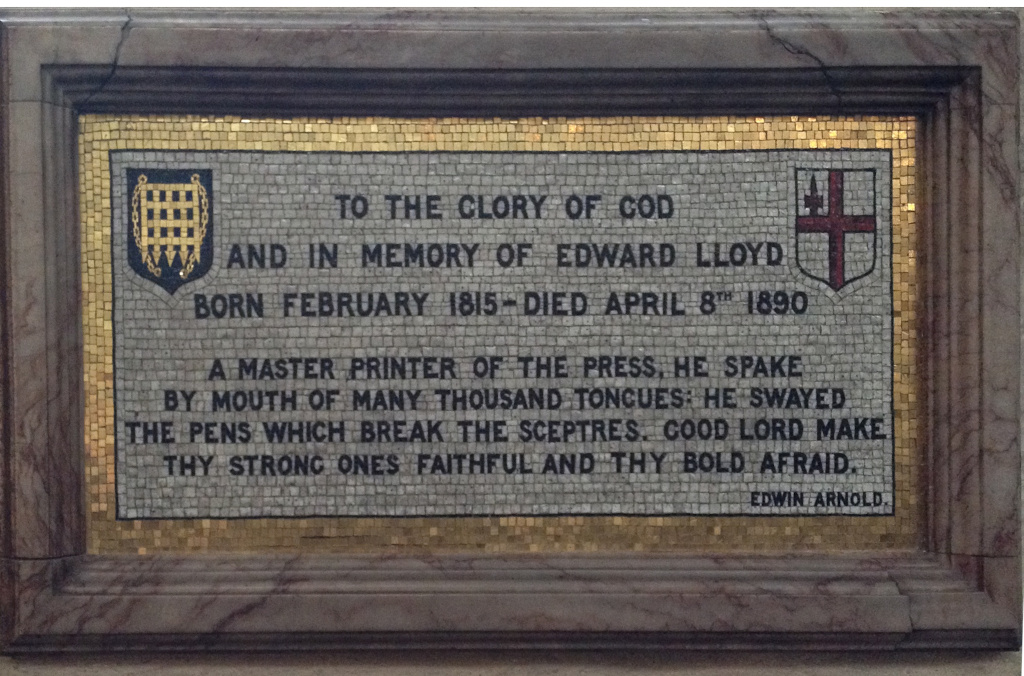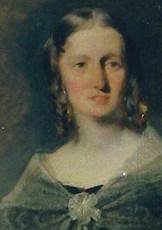Edward Lloyd 1815–1890
Edward Lloyd was born on 16 February 1815 into a modest family. His father was in trade in the City of London but no stranger to the bankruptcy court. Edward was the youngest of three sons. Nigel Lloyd’s research suggests a family with the attitudes of the middle class, albeit without the financial security that would normally have gone with it. The children may have been encouraged to aim high. His eldest brother, Thomas, made a successful career in medicine but the middle son, William, died in poverty.
Edward’s education to the age of 14 was fairly generous at a time when the poor received little or no schooling. He was intelligent, energetic and enterprising, and claimed to have started on his life's career of publishing as soon as he left school.
St Margaret’s Church
This plaque commemorates Edward in St Margaret's Church, Westminster. The verse is by Sir Edwin Arnold, a popular poet and editor of the Daily Telegraph for 15 years. “The pens that break the sceptres” caught the fancy of Lord Tennyson. At the time, he was writing a verse for William Caxton who was buried at the church in 1492 and commemorated by the London printing trade in 1892.
 |
| The Commemorative plaque in St Margaret’s Church, Westminster |
The memorial window to Edward was seriously damaged by a bomb blast in World War II, along with the adjacent window dedicated to Caxton. They were in the north wall, next to the window dedicated to Admiral Robert Blake (1598–1657).
Depicting “work”, the three larger window panels of Lloyd’s window showed Jesus in a carpenter’s workshop flanked by two angels and the three smaller ones, a sower sowing seed, Caxton at his presses and a reaper harvesting grain as reported in Pall Mall Gazette, 13 June, 1891 p.2.
Edward’s memory is also celebrated in Holy Trinity Church, Algiers, where he is remembered as “the first to show the value of alfa fibre [esparto] for the manufacture of paper”.

